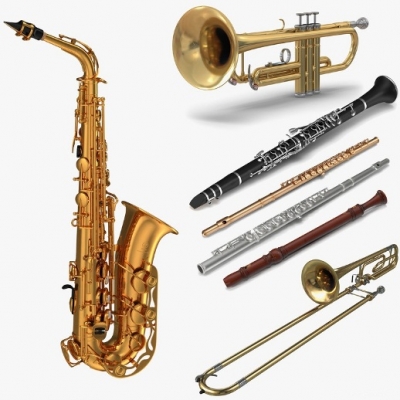
Wind Instruments
Have you ever whistled a happy tune? Many instruments make music the same way you do when you whistle – by using a stream of air. These instruments belong to the wind family. They are all played with “wind” – your breath.
Some wind instruments are called woodwinds, because many of them were once made of wood. These include flutes and clarinets.
A concert flute has a mouthpiece with a small hole on the top. When you blow across the hole, the air inside the flute vibrates. The vibrations inside the tube create sound waves, and these sound waves make the music.
To make or play notes, you press keys that open “windows” for the air. If you open the holes close to the mouthpiece, the vibrations travel a short distance to reach an opening. So the air forms short sound waves – and high notes. If you open holes further down the tube, the vibrations travel further. This forms longer sound waves – and lower notes.
Some flutes are blown from the end instead of the side. To play a Japanese bamboo flute called a shakuhachi, you cover one of its ends with your chin and blow into a notch on the top of the flute. To make or play different notes, you cover or uncover the holes along the flute with your fingers and thumb.
Brass instruments are part of the wind family of instruments. Where does the loud, sharp sound of a trumpet come from? It starts with you, the musician.
When you blow into a trumpet, you vibrate your lips against the cup-shaped mouthpiece. This makes the air in the trumpet vibrate and create a sound. Try changing the shape of your lips. This makes the air vibrate faster to make a high note or slower to make a low note.
You can also change the sound by making the vibrating air travel further. A trumpet has several loops of tube. When you press a button, you open a valve, or doorway, in one of the loops. When vibrations travel through extra loops, they make a lower sound.
The slide trombone has tubes but no valves. To make high or low notes, you slide a U-shaped tube in and out. The shorter you make the tube, the shorter the sound wave and the higher the note.
Picture Credit : Google




